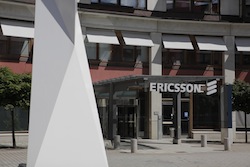Ericsson has made the first commercial deployment of its fibre fronthaul solution with China Mobile, as the vendor announced the product is being trialled by several other operators.
China Mobile has deployed a C-RAN based architecture for a TD-LTE service but has adopted Ericsson’s wavelength division multiplexing solution, which the Sweden-based company said would lower the operator’s total cost of ownership and provide a better mobile broadband experience.
According to Ericsson, in order for China Mobile to deploy TD-LTE C-RAN in the Qingdao Development Zone, it had to be low capital and have low operational costs. The remote radio locations have one outdoor antenna and no air-conditioning cabinet on the remote radio unit.
China Mobile said its C-RAN has a lower cost of ownership through centralising the baseband and main units into one location by using a mix of its existing fibre network and Ericsson’s PAU 6000 fibre fronthaul solution. The operator added both solutions provide a common public radio interface (CPRI) communication to remote radio units.
By using C-RAN based architecture with higher speed and low latency CPRI fibre, China Mobile is able to improve radio multipoint coordination for a better LTE service.
Jan Signell, Head of Ericsson Northeast Asia, commented: “Ericsson’s focus on enabling China Mobile’s desire for a cost-effective, low-power, environmentally rugged WDM networking product with high performance and fast deployment for its C-RAN initiative has led to the development of the PAU 6000 family of fiber fronthaul products.”
In May, China Mobile gave the go-ahead for Ericsson’s M7450 five-mode modem chipset, which covers TD-LTE, LTE-FDD, WCDMA, TD-SCDMA and GSM. The first devices running the chipset are likely to hit the market later this year.



